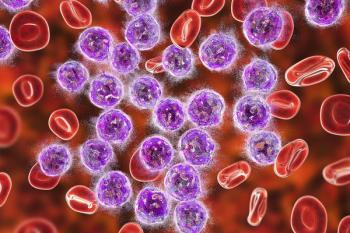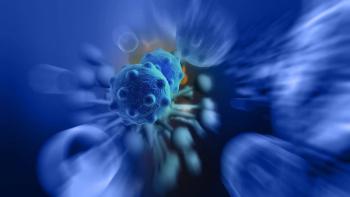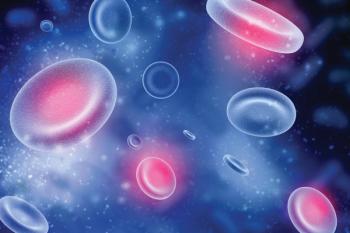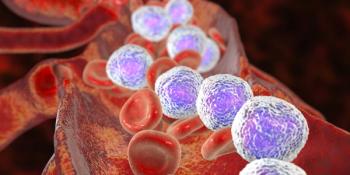
Oncology NEWS International
- Oncology NEWS International Vol 10 No 1
- Volume 10
- Issue 1
STI571 Proves Effective in Patients With Interferon-Failure CML
SAN FRANCISCO-Results of a phase II, open-label, multicenter study show that the investigational agent STI571 holds promise for many patients with Philadelphia chromosome-positive (Ph+) chronic myelogenous leukemia (CML) whose disease has proved resistant to interferon therapy.
SAN FRANCISCOResults of a phase II, open-label, multicenter study show that the investigational agent STI571 holds promise for many patients with Philadelphia chromosome-positive (Ph+) chronic myelogenous leukemia (CML) whose disease has proved resistant to interferon therapy.
After 6 months of STI571 therapy, 56% of patients experienced a major cytogenetic response, Hagop Kantarjian, MD, said at the 42nd Annual Meeting of the American Society of Hematology (ASH). The study was sponsored by Novartis Oncology, which has named the new agent Glivec.
A total of 532 patients were enrolled in the study from 28 centers in the United States, France, Germany, Italy and the United Kingdom, said Dr. Kantarjian, professor of medicine, Department of Hematology, M.D. Anderson Cancer Center. STI571 was administered orally at a dose of 400 mg daily.
Interferon failure was defined as a lack of complete hematologic response despite 3 months of an interferon-containing regimen, or as a lack of a cytogenetic response despite 1 year of an interferon-containing regimen. Patients who had suffered a hematologic or cytogenetic relapse were also included, as were patients with documented grade 3 interferon intolerance.
Among 388 patients treated with STI571 for 3 months, Dr. Kantarjian said, more than 90% achieved a complete hematologic response (ie, normalization of white blood cell counts), most within 4 to 6 weeks. Of these patients, 37% also achieved an overall major cytogenetic response: 13% had a complete cytogenetic response (0% Ph+ cells), and 23% had a partial response (less than 35% Ph+ cells).
He also reported preliminary data on 290 patients who have completed 6 months of STI571 therapy. Among these patients, 56% have had a major cytogenetic response, with a complete cytogenetic response rate of 28%.
Among patients with less aggressive disease (less than 100% Ph+ cells), 78% had a major cytogenetic response. Patients who began STI571 treatment earlier in their disease (within a year of diagnosis) had a major cytogenetic response rate of 62%.
"There was a concern that these cytogenetic responses might not be durable," Dr. Kantarjian said. "But, in fact, that has not been the case. There have been no patients with a cytogenetic response who have evolved into blast crisis."
Dr. Kantarjian also noted that older patients responded as well as the younger patients. (The median age in the study was 56 years). "Given the toxicity of interferon in the older age groups, STI571 should become the treatment of choice in these older patients," he said.
The most frequent adverse events in the study were nausea, muscle cramps, headache, vomiting, fatigue, and diarrhea. Grade 3-4 toxicities, including myelosuppression, were unusual, Dr. Kantarjian said, and occurred in only about 3% of patients.
"These results are better than anything we’ve ever had in patients with CML who had failure of interferon therapy," Dr. Kantarjian said. "The official conclusion is that the data are very encouraging and that the side effects are acceptable. But I would also like to express my personal opinion that this is the most important drug we have ever discovered for CML. Especially with patients treated early in their disease with STI571, we are going to have results beyond any previous expectations. I believe it should become front-line therapy."
Articles in this issue
almost 25 years ago
ODAC Recommends Campath for FDA Approval for Refractory CLLalmost 25 years ago
‘IrinoGem’ Active and Well Tolerated in Pancreatic Canceralmost 25 years ago
STI571 Studies Help Validate Molecular Targeting in CMLalmost 25 years ago
Outpatient Mylotarg Therapy Cuts Costs in Relapsed AMLalmost 25 years ago
Prostate Cancer Patients Tolerate Higher 3D Conformal RT Dosesalmost 25 years ago
IP6 (Phytic Acid) Inhibits Breast Cancer in Animalsalmost 25 years ago
Adjuvant Therapy Beneficial in Early, Node-Negative Breast Canceralmost 25 years ago
Medicare Increases Payment Rates for Most Physiciansalmost 25 years ago
Update on High-Dose Consolidation Therapy in Breast Canceralmost 25 years ago
Lessons Learned From Large Lung Cancer Screening ProgramNewsletter
Stay up to date on recent advances in the multidisciplinary approach to cancer.
































































































